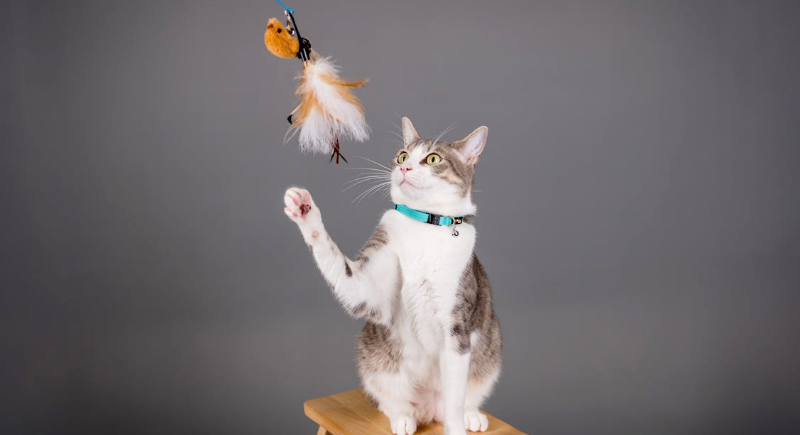This Man Created a Genius ‘Squirrel Theater’ to Entertain His Cats
A man built a miniature theater in his backyard with one purpose: to keep his cats entertained. The setup looks like a tiny stage, but instead of actors, it features squirrels drawn in by scattered snacks and curious structures. The cats stay inside and watch through a window like an audience.
What started as a creative enrichment project quickly caught attention online, with people sharing reactions, photos, and attempts at building similar scenes. The squirrel theatre isn’t just clever, but it also connects to growing trends in pet care, enrichment, and how owners are adapting spaces to engage indoor animals.
The Squirrel Theater Used Real Wildlife as Actors
The structure of the theater appears to be playful, but its function is more practical than you can tell. For example, the creator made sure to add props—like a toy bench—to stage a scene visible from the house. He placed seeds and food around the area to attract squirrels, who naturally explore and interact with anything new.
As squirrels arrived, the cats stationed themselves at the window, fully locked in on the things happening outside. The display mimicked live-action TV for pets and offered changing visuals and unpredictable moments that kept them alert.
It is common knowledge that squirrels respond to food, and cats respond to movement. By bridging both, the builder created a system that stimulated cats without overstimulating them. It also gave them something to focus on without requiring direct interaction. The cats could watch, react, and stay mentally engaged, all while remaining safely indoors.
Watching Prey Animals Benefits Indoor Cats
Indoor cats miss out on daily motion cues that would normally keep them alert. In nature, small prey animals like birds, mice, and squirrels provide short bursts of visual interest that encourage cats to focus, track, and anticipate action. Without that focused activity, cats can become bored or anxious.
Squirrel theaters—or any setup that places wildlife in view—can restore some of that natural engagement. Cats aren’t watching for entertainment in the way people do. They’re watching actions, body language, and unpredictability. This activates their brain in a way that stationary toys cannot, and the benefit goes beyond amusement. Experts in pet behavior often recommend such enrichment activities that encourage natural instincts like observing, pouncing, or stalking. A visible outdoor scene satisfies part of that need through emotional balance, reduced behavioral issues linked to boredom, and can even help with weight management through low-level motion and alertness.
Wildlife Viewing Fits with Veterinary Enrichment Advice

Image via Pexels/Valent Lau
Veterinary guidelines on cat enrichment consistently mention outdoor visuals as beneficial for mental stimulation. Cats still need toys, climbing structures, and interaction with their humans, but wildlife scenes offer something passive. They give cats something to monitor, which supports attention span and observational skills.
Veterinarians also emphasize the importance of variety. New toys, rotating feeders, and different types of movement can help keep interest high. These changes are enough to re-engage a cat that might otherwise tune out a stationary object.